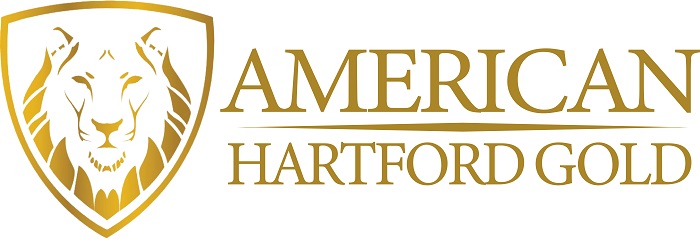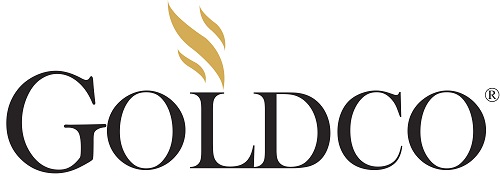Last Updated on March 17, 2024 by Ben
Traditional 401k
Traditional 401k plans are a great way to save for retirement. These plans allow you to contribute pre-tax money, lowering your taxable income for the year. But if you want to save more money for retirement, don’t forget about matching contributions. If you are looking for a way to save for retirement, a Traditional 401k plan may be the right choice!
What are Traditional 401(k) Plans?
A 401(k) plan is an employer-subsidized plan where employees can choose from selecting investments. The employee contributions and earnings from these investments are not taxed until they are withdrawn. When you save money in a 401(k) plan, you will have to pay taxes on the contributions and earnings when you take the money out. Some employers will match a part of their employee’s contributions, and this matching money is also taxed, but the taxes are deferred until you take the money out.
How Does a Traditional 401(k) Work?
A traditional 401(k) plan is a retirement account that you save money in before you pay taxes. If you saved $10,000 in your 401(k) plan, you wouldn’t have to pay taxes on that amount. This lowers your taxable income, meaning you will pay less in taxes. When you retire and use this money, you will have to pay income tax, but it is likely at a lower tax rate than when you were working.
A 401(k) plan is a payroll-deducted plan. Your employer matches a percentage of the first 4% of your contributions. The percentage your employer matches will depend on your income and the plan you have chosen. You can’t just mail a check to your account because contributions are not possible after being paid.
When you put your money into your 401(k), you will have the option to invest it in a wide variety of stocks, bonds, and mutual funds. This will allow you to have a diverse investment portfolio that fits your specific needs. If you’re unsure what to invest in, speak to a 401(k) investment advisor representative at 800-356-3009. They can help you decide the best investment option based on your age and risk tolerance. It is very important to contribute to a 401(k) plan every pay period. Our representatives can help you with this, and there is no additional fee for investment advice.
The IRS has some requirements when you put your money into a 401(k). The IRS says how much you can invest each year, and this number may change from year to year. Recently, the maximum amount that could be invested was $20,000 each year, unless you are over 50 years old. If you have more money saved, you can contribute more. But there are also rules about when you can take the money out. You can usually take the money out at the age of 67, but if you’re 59 1/2 or older, you can take it out early – this is called an in-service distribution. If you take a dispensation from your retirement account before you are 59 1/2, you could be hit with a ten-percent early-withdrawal penalty.
You withdraw your money out of your account before retirement, but there are ways to use your money. The first way is to borrow from your account. You can borrow the money and pay it back with interest. The second way is to take a distribution. This is when you take some or all of the money out of your account. If you don’t repay your money to your account, the IRS will treat it as a distribution and tax you on that amount. Repayment of your 401(k) plan balance is usually within a year of taking the money out. You can also lay hold of money out of your account if you have a hardship. There are a few reasons you can take your money out of your retirement account before you reach retirement age. You can do this to avoid foreclosure or eviction, to pay for medical expenses that are very expensive, or to pay for college tuition. However, these withdrawals are subject to taxes and penalties.
Traditional 401(k) Rules and Regulations
The Securities and Exchange Commission does not control or oversee retirement plans such as pensions or 401(k) plans, and this means that the SEC is not responsible for making sure these plans are fair and safe for people who use them.
What Fees are Included in Your 401(k)?
✅ Plan Investment fees
The largest portion of 401(k) fees are investment fees. These are the costs of having someone manage your investments and other related services. Investment fees are usually charged as a percentage of the amount you have in your account. There are three main types of investment fees: expense ratios, sales loads, and additional costs. Actively managed funds usually have higher investment fees than passively managed funds.
✅ Plan Administration Fees
Somebody is managing your 401(k). This person is called a trustee. They make sure all the money goes to the right places and keeps track of everything. This person also makes sure that everything follows the law. They usually charge for their services, called a plan administration fee. The 401k plan also allows you to access other services, like customer service representatives, educational seminars, and electronic access to your account information. Some employers pay for these services for their employees, but in most cases, the costs are added to the plan balance.
✅ Individual Service Fees
Service fees are like administrative fees. You probably don’t need a 401(k) plan, but your employer might offer it to you. You pay for it the same way you pay for any other service. Before you do anything else with your 401(k), like buying or selling stocks, investigate there is a fee and how much it will cost.
Average 401(k) Fees
A study from the Center for American Progress (CAP) found in 2014 that the average American worker who makes a median salary at age 25 will pay around $138,336 in 401(k) fees over their lifetime. The cost was even greater for high-income earners. The average 401(k) fees are about 1% of the total amount in the account. Another study found that people paid an average all-in fee of 2.22% but that there was a wide range between 0.2% and 5%.
These proportions may not seem like a lot, but they can have a big impact. If your fees are just a fraction of a percentage point higher, that could mean tens of thousands of dollars less in total return from your nest egg. Yale University researchers say that anything above 1% is a lot. The Department of Labor just requires fees to be “reasonable” and doesn’t specify a certain percentage or total amount that 401(k)s can charge. Fees vary depending on the dimension of your employer’s 401(k) plan, the number of participants, and the employer’s history. Companies with more employees usually have to pay lower fees. Fees are also based on how active your plan’s funds management is.
The cost of 401(k)s has been going down in recent years. Employers have been moving to lower-cost, passively managed funds and collective investment funds to save money. You should check your savings every few years to make sure you are still comfortable with your plan. Compare the fees from your 401(k) to the fees from other providers and to the industry averages.
Recommended Gold IRA Companies
Augusta Precious Metals



www.augustapreciousmetals.com



Star Rating
Augusta has great customer service, low prices and is my top pick for a gold company. Augusta is known for being transparent with clients, so you always know what to expect when investing in precious metals! Augusta Precious Metals is the only company I know that offers customer support for your account for as long as you have it.
The process of buying and selling gold helps people learn about the economy. People have been utilizing gold to protect their money from devaluation for a long time. This happens during tough times when people lose confidence in the government and its decisions. The only gold firm that takes a distinct approach to one-on-one web conferences in which experts explain the economy, retirement security, and real gold and silver.
American Hartford Gold



www.americanhartfordgold.com



Star Rating
The AHG is a self-directed IRA where you choose the precious metals stocks that make up your portfolio. They have spent years educating their customers so that they can make informed decisions when purchasing gold or other precious metals. American Hartford Gold strives to help individuals and families invest their money wisely. They do this by providing high-quality products at a fair price. The team at American Hartford Gold is an expert in the industry, and they can provide high-quality service to both new and experienced investors.
If you are looking to invest in gold or other precious metals, American Hartford Gold may be able to help. This well-known and established company offers only the highest-grade products at competitive prices. They have long-standing notoriety as one of the top precious metal providers in the country.
American Hartford Gold helps you make informed decisions about investing in precious metals. You can buy them directly or set up a gold IRA to protect your retirement savings. Adding critical diversification to your retirement plan with a gold IRA protects your nest egg. American Hartford Gold helps you do this and provides you with excellent service so you can take control of your future.
Goldco



www.goldco.com



Star Rating
Goldco Precious Metals is a company that gets rid of precious metals, including gold and silver, to customers. The company was built in 2006 and has helped many people diversify their wealth with physical metals. The Goldco plan is an investment vehicle that allows you to put money in and get back over-the-counter, or OTC, physical precious metals.
Trevor Gerszt founded Goldco, headquartered in Woodland Hills, California. Inc. Magazine named it the third fastest-growing company in the US in 2015, and the Los Angeles Business Journal also named it the 17th fastest-growing company in the greater Los Angeles Area. Goldco’s mission is to help Americans protect their retirement accounts from the stock market and inflation.
Final Thoughts – Traditional 401k
A traditional 401(k) is a great way to save for retirement. Contributions and earnings are tax-deferred, meaning you don’t have to pay taxes on them until you withdraw the money. This can help reduce your taxable income now and in retirement. Employers often match employee contributions, making it even easier to save for retirement. If you’re eligible, sign up for a traditional 401(k)!


